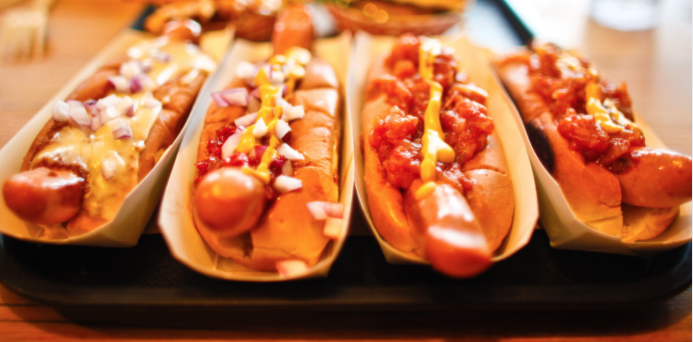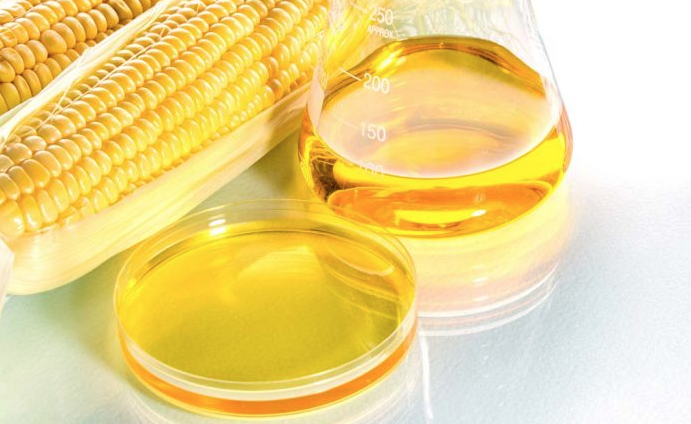By: Heidi Wagenbach
“Putting all of the health risks aside, there are certainly some psychological… risks with regards to development of an eating disorder for people who had any sort of genetic predisposition to have one. Somebody eating 70 hot dogs in 10 minutes is self-abuse to some extent.”
-Kim Dennis, board-certified psychiatrist
Part I: Introduction
Mukbangs
I’ve been watching a lot of hilarious mukbang (online videos of people eating a lot of food while addressing the audience; first originated in Japan) edits recently. My YouTube recommendations page then suggested that I check out a documentary about this phenomenon that has blown up in popularity over the past couple years. Why do we find viewing others indulge WAY too much food fascinating, relaxing, an actual hobby? The narrator described that food, like some of our most carnal desires, come from the beginning of humanity. Hunting and/or finding food and propagating with an ideal mate were the top two reasons for existing, for survival. So maybe, like sexual drives, food is appealing in a sense that we want it, and we want it to taste good.
Outlet for Anorexia
Another argument is people with eating disorders find these helpful because they are repulsed from the amount of food/the way it’s consumed. Their ability to eat the rest of the day is hindered. They state: “I’m full” in the comments, just by watching someone stuff their face with burgers and fries. As a person who battled with an eating disorder… I can confidently say that’s true. I found videos about food desirable since I was limiting what I was eating in reality.
Thus, I was inspired to write this article.
Part II: The Background of Competitive Eating
I can say that I’m not a fan of watching people eat, even if the food looks tasty. The mouth sounds are not… appealing, especially if the microphone is at max sensitivity level and you hear every crunch, every smack, every swallow. To say the very least, competitive eating is something that always sickened me.

(A before/after comparison of YouTuber Nikocado Avocado after years of mukbanging. As of 2019, he reportedly weighs over 350 pounds and suffers from low libido, erectile dysfunction, and undefined mental issues [evidenced by his more noticeable chaotic behavior in recent videos]. Ironically, he met his former husband through a Facebook group for vegan men).
A little history about this… (ahem) sport is that they’re popular around the world (but mostly focused in the US). The prizes range up to $10,000 and the food is supplied by sponsors. Participants register via Major League Eating (not gonna lie, I had to control my laughter at that name), which is the main organization that oversees all professional eating competitions. But aggressively eating large amounts of food dates back all the way to the 1400s. In a particular story, a Nordic man enters an eating competition with a god. Fast forward to the 1700s when poet James Taylor wrote of the “Great Eater of Kent,” who binged approximately 60 eggs, lamb, and pies, but the “meal left him hungry for more.”
Part III: Examples
- The Vaughan Pizza Fest World Pizza Eating Contest (yes, you read that right) in 2018 awarded $4,000 to the winner, Geoff Esper. He broke a record by eating 19.25 9-inch personal pizzas within 10 minutes. He also won another $4,000 for downing 15.5 pints of vanilla ice cream at the Indiana State Fair in Indianapolis.
- In 2017, Carmen Cincotti ate a little over 20 pounds of poutine (a Canadian dish composed of french fries, cheese curds, and brown gravy) in 10 minutes. She was awarded $6,000.
- Molly Schuyler won $1,500 for eating 265 jalapeños in 2018’s WBCA Jalapeño Festival in Texas.
- Matt Weis was crowned the “gold skillet winner” at the Keystone Bacon and Bourbon Festival in Colorado in 2018 after eating a full pound of bacon.
- Nathan’s Fourth of July Hot Dog-Eating Contest originated in 1916. Competitor Joey Chestnut broke the record of 74 hot dogs, winning a total of 11 times.
Part IV: How Competitive Eaters “Train”
Liquids to Solids
The “training” for competitive eating is just as bad as the previous part. In order to prepare their body for the amount of food they’re going to consume, eaters drink massive amounts of liquid to begin this brutal process. (For example, chugging two-and-a-half gallons of chocolate milk in 3 minutes). They condition their throats to swallow large amounts without choking. They first start by gulping down entire mouthfuls of water, then move onto softer foods, then to solid, where they ravage large chunks at once. (And your teeth are there because…?). Competitive eater Matt Stonie (famous for his YouTube channel) eats between 10,000 and 22,000 calories a day when preparing himself for competition.
“The Reversal of Fortune”
The gag reflex holds another obstacle for these eaters (but will that stop them? No). If they “suffer urges contrary to swallow”, or in other words, they’re about to puke, they’re disqualified. A couple tricks they use is to not think about the taste of the food or brush their teeth really far back to condition themselves. Their jaws have to be strong, or more specifically, their masseter muscle, which is one of the most powerful in your body. So, they chew five or more pieces of gum at a time. Some eaters’ bites have been measured at 280 pounds by force; for a visual, that’s stronger than a German shepherd.
Move Over!
In the video The Science Behind Competitive Eating, they show how competitive eaters’ stomachs expand, and push other organs out of the way. Their stomach enlarges 4x larger than a non-competitive eater, or 400% bigger. (It’s advisable to view with an empty stomach yourself). Fun fact: most competitors are hushed when it comes to sharing what the aftermath is like. Only a couple have eluded that bathroom trips the next day aren’t fun. (I wonder why). Surprisingly, most competitive eaters are in shape, because a common theory is that fat hinders the stomach from becoming larger.
Part V: The Dangers
Now time to address the risk factors (both present and long term) of competitive eating. In 2014, a man began choking while participating in an amateur hot dog-eating contest in South Dakota. Bystanders attempted CPR but no emergency personnel were present and he died. A similar situation occurred in 2016 when a woman who was heavily intoxicated decided it would be a great idea (more sarcasm) to participate in a corn dog eating contest. She choked, and due to the lack of oxygen to the brain, had to be put on life support before she ultimately died.
(It doesn’t get better from here, folks).
The National Geographic Special
Doctors from the University of Pennsylvania did an experiment for the above magazine/television channel. They wanted to determine what happens to competitive eaters’ stomachs when they eat. This experiment compared two men, one an eating champion, and the other a quote-unquote normal eater with a “healthy appetite.” They were asked to consume as many hot dogs as they could in 12 minutes. The competitor’s stomach “appeared as a massively distended, food-filled sac occupying most of the upper abdomen.” It also had “little or no gastric peristalsis” (the squeezing motion that normally helps break down food). Later, the doctors determined that:
“He was able to overcome the satiety reflex (what triggers the neural pathways that tell the body it’s full and triggers vomit), and once he did that, the stomach overcame the peristalsis activity so it was able to accept an unlimited amount of food.”
The Predicted Consequences
Even though there is little to no evidence of what competitive eating does to your body in the long term, doctors speculate that if the stomach stretches enough that it can’t get back to its original size, it could potentially cause “intractable nausea and vomiting, necessitating a partial or total gastrectomy to relieve symptoms and restore their ability to eat.”
Part VI: Final Thoughts
I don’t care if the grand prize is $10,000… I would never do this to my body. Not only do you expose yourself to possible health issues in the future, but you’re practically torturing your body by overeating and bloating. The point of food is to enjoy it, not scarf it down like a wild animal. You constantly hear chefs saying “that’s sexy” towards food, because it is indeed portrayed as a sensual thing. Commercials like this one have precise lighting, camera shots, and relatively attractive actors to mimic the sensation of making and eating something creamy, chocolatey, and delicious. Then, switch over to a clip of a competitive eating show and the difference is frighteningly jolting. One is taking too much time to enjoy a small morsel of sweets, where the other is jamming food down their throat like there’s no tomorrow– and for some eaters… there isn’t going to be.
Sources:
11 eat competitions that will leave you disgusted – but impressed
The Untold Truth Of Competitive Eating
Here’s What Competitive Eating Does to Your Body



